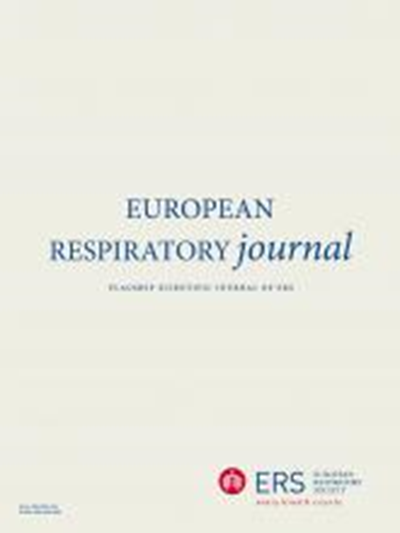cd206阳性巨噬细胞浸润的调节限制肺淋巴管平滑肌瘤病(LAM)的进展。
IF 16.6
1区 医学
Q1 RESPIRATORY SYSTEM
引用次数: 0
摘要
淋巴血管平滑肌瘤病(LAM)是一种低级别肿瘤,由结节性硬化症(TSC)1或tsc2缺陷LAM细胞增生引起,导致进行性囊性肺疾病。目前批准的治疗LAM延缓疾病进展,但如果停止治疗,疾病会复发。因此,新的治疗靶点和/或策略对于治愈是必要的。免疫抑制的m2样巨噬细胞参与了各种癌症的进展,但它们在LAM的病理生理中的作用以及作为假定的治疗靶点尚不清楚。方法为了鉴定与LAM相关的不同免疫细胞群,我们绘制了肺LAM的单细胞转录组图谱。利用Visium空间转录组平台和免疫荧光染色对人肺LAM标本进行巨噬细胞与LAM细胞的相互作用研究。采用直接共培养模型表征tsc2缺陷细胞对巨噬细胞分化的影响。在使用RP-182治疗tsc2缺陷皮下肿瘤的临床前小鼠模型中评估了靶向m2样巨噬细胞的效果,RP-182是一种合成肽,可将巨噬细胞重编程为抗肿瘤m1样表型。结果单细胞RNA-seq分析显示,肺LAM中大多数巨噬细胞显示免疫抑制标志物,包括CD206/MRC1和CD163。空间转录组学和免疫荧光分析表明,M2巨噬细胞与LAM细胞接近,而与巨噬细胞接近的LAM细胞高表达巨噬细胞归巢因子趋化因子配体CXCL12。体外实验中,人、小鼠巨噬细胞与tsc2缺失细胞共培养,可导致巨噬细胞M2标记物表达上调。用CD206调节剂RP-182靶向M2巨噬细胞,可在体内损害tsc2缺陷肿瘤的生长。结论lam细胞招募巨噬细胞并使巨噬细胞向M2型分化。m2样cd206高巨噬细胞可能是LAM的潜在治疗靶点。本文章由计算机程序翻译,如有差异,请以英文原文为准。
Modulation of infiltrating CD206-positive macrophages restricts progression of pulmonary lymphangioleiomyomatosis (LAM).
RATIONALE
Lymphangioleiomyomatosis (LAM) is a low-grade neoplasm caused by the proliferation of tuberous sclerosis complex (TSC)1 or TSC2-deficient LAM cells, resulting in progressive cystic lung disease. The currently approved treatment for LAM delays disease progression but the disease recurs if treatment is discontinued. Therefore, new therapeutic targets and/or strategies are necessary for a cure. Immunosuppressive M2-like macrophages are involved in the progression of various cancers, but their role in the pathophysiology of LAM and as a putative therapeutic target is unknown.
METHODS
To identify the different immune cells populations involved in LAM, we generated a single-cell transcriptomic map of pulmonary LAM. Interactions between macrophages and LAM cells were studied using the Visium spatial transcriptomic platform and immunofluorescence staining on human pulmonary LAM specimens. Direct co-culture models were used to characterize the influence of TSC2-deficient cells on macrophage differentiation. The efficacy of targeting M2-like macrophages was assessed in preclinical mouse models of TSC2-deficient subcutaneous tumors treated with RP-182, a synthetic peptide which reprograms macrophages towards an anti-tumor M1-like phenotype.
RESULTS
Single-cell RNA-seq analysis revealed that the majority of macrophages in pulmonary LAM display immunosuppressive markers, including CD206/MRC1 and CD163. Spatial transcriptomic and immunofluorescence analyses showed that M2 macrophages are in close proximity to LAM cells and that LAM cells which are in close proximity to macrophages highly express macrophage homing factor chemokine ligand CXCL12. In vitro, co-culture of human and mouse macrophages with TSC2-deficient cells resulted in the upregulation of M2 markers expressed macrophages. Targeting M2 macrophages via treatment with the CD206 modulator RP-182 impaired the growth of TSC2-deficient tumors in vivo.
CONCLUSION
LAM cells recruit and polarize macrophages towards an M2 phenotype. M2-like CD206high macrophages may represent a potential therapeutic target in LAM.
求助全文
通过发布文献求助,成功后即可免费获取论文全文。
去求助
来源期刊

European Respiratory Journal
医学-呼吸系统
CiteScore
27.50
自引率
3.30%
发文量
345
审稿时长
2-4 weeks
期刊介绍:
The European Respiratory Journal (ERJ) is the flagship journal of the European Respiratory Society. It has a current impact factor of 24.9. The journal covers various aspects of adult and paediatric respiratory medicine, including cell biology, epidemiology, immunology, oncology, pathophysiology, imaging, occupational medicine, intensive care, sleep medicine, and thoracic surgery. In addition to original research material, the ERJ publishes editorial commentaries, reviews, short research letters, and correspondence to the editor. The articles are published continuously and collected into 12 monthly issues in two volumes per year.
 求助内容:
求助内容: 应助结果提醒方式:
应助结果提醒方式:


